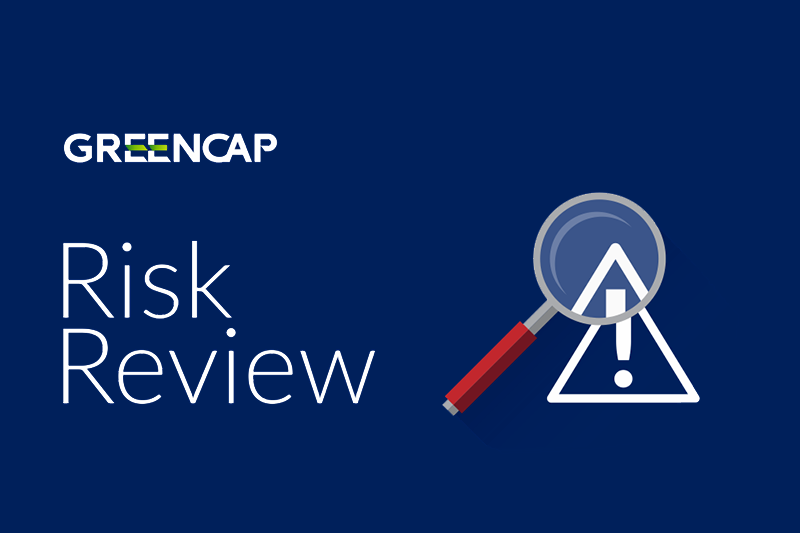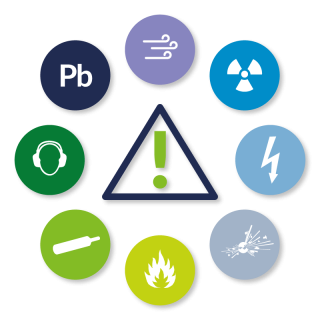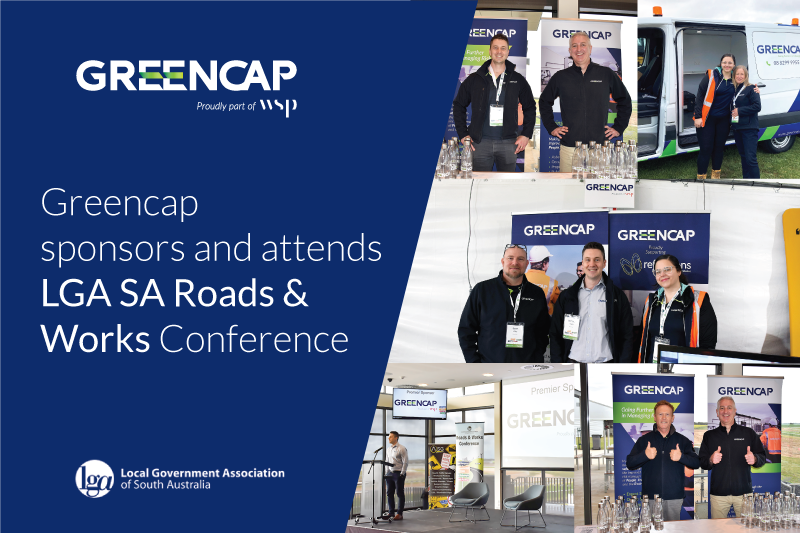News & Insights
Risk Management of Welding & Welding Fumes
Welding is defined by the Safe Work Australia Code of Practice – Welding Processes as:
“The process of permanently joining two or more materials together, usually metals, by heat or pressure or both. When heated, the material reaches molten state and may be joined together with or without extra filler materials being added.”
There are various and differing energy sources that can be used for welding activities including gas flames, electric resistances, lasers, electric arcs, electron beams, friction, molten metal baths and ultrasound. The process of welding also includes a variety of joining methods such as spot welding, resistance welding, forge welding, friction welding, braze welding, brazing, soldering and explosion welding.
As such, welding is considered a hazardous activity that requires appropriate risk management and mitigation.
What are welding fumes?
Welding can generate fumes, mists, dust, vapours, and gases, including ozone. The amounts and types of fumes produced vary greatly depending on the process involved and the materials being used such as metals, solvents, flux, paint, and plastics. Generally, fewer fumes are generated from gas welding than from electric welding processes. Arc welding processes generate arcs of electricity, which emit intense ultraviolet radiation. This may travel significant distances from arcs, especially in reflective environments, and can give rise to significant quantities of ozone.
The health effects of exposure to fumes, dust, vapour, and gases can vary. Effects can include irritation of the upper respiratory tract (nose and throat), tightness in the chest, asphyxiation, asthma, wheezing, metal fume fever, lung damage, bronchitis, cancer, pneumonia, or emphysema.
Some welding fumes may be visible during welding; however, many fumes, mists, dust, vapours, and gases are invisible. Welding fumes can be visually identified using the ‘Dust Lamp’ via the use of the ‘Tyndall Effect’.
What risks are associated with welding fumes?
In 2017, the International Agency for Research on Cancer (IARC) reclassified welding fumes, and UV radiation from welding, as Group 1 carcinogens, which are cancer causing (carcinogenic) to humans.
As defined within Safe Work Australia’s Guidance on the Interpretation of Workplace Exposure Standards for Airborne Contaminants, a Category 1A substance is a substance “known to have carcinogenic potential for humans are substances for which there is sufficient evidence to establish a relationship between human exposure to these substances and the development of cancer.”
Other hazards associated with welding and welding fumes are wide ranging and include, but are not limited to:
- Airborne contaminants
- Radiation
- Electricity
- Fire and explosion
- Burns and heat exposure
- Compressed and liquified gases
- Noise
- Lead
Welding fume obligations required under existing legislation
The primary responsibility holders under the Model WHS legislative framework are employers or Persons Conducting a Business of Undertaking (PCBUs) who:
- Have primary responsibility to ensure that welders, as far as reasonably practicable, are not exposed to health and safety risks through the course of their work activity
- Are required to effectively manage the risks of hazardous chemicals, airborne contaminants, and plant, as well as other hazards associated with welding, such as noise and manual tasks
- Must ensure they consult with their workers about the health and safety risks associated to welding activities, and in the development and implementation of relevant controls
However, workers also have obligations under the legislation, including:
- A duty of care to ensure the safety of themselves and to not affect the health and safety of others. They must comply with any reasonable instructions provided to them by the PCBU, and to cooperate with health and safety policies and procedures.
- Where PPE is provided by the PCBU, then the Worker must wear the PPE in accordance with any reasonable instruction and training provided.
Will there be new Workplace Exposure Standard (WES) changes in the near future?
Sampling for welding fume is currently conducted as per AS 3853.1-2006 Health and safety in welding and allied processes – Sampling of airborne particles and gases in the operator’s breathing zone (Part 1: Sampling of airborne particles and Part 2 Sampling of airborne gases).
Safe Work Australia (SWA) are proposing that the Workplace Exposure Standard (WES) for Chromium VI be reduced from 0.05mg/m3 down to 0.000007 mg/m3 (7 ng/m3). If this new significantly lower WES is adopted, there will be multiple implications associated with the measurement and assessment of welding fume. For instance, the newly proposed WES is lower than the achievable laboratory limit of reporting for some welding fume constituents, such as hexavalent chromium (Cr VI), available using current analytical methods (as specified in AS3853.1-2006).
Current challenges and industry trends
There is little doubt that the reclassification of welding fumes by the IARC has highlighted the need for workplaces to review and reassess their current welding processes and risk controls.
By being familiar with, and understanding the Regulatory guidance, workplaces can make better decisions regarding welding fume management and risk mitigation, as well as to inform themselves of current challenges and industry trends, including:
- Implementing processes to account for exposure threshold reductions
- Baseline and ongoing background air monitoring requirements
- Health surveillance and monitoring
- Industry awareness training to increase workforce understanding of Regulatory change
- Industry guidance on how to navigate process changes
What does the hierarchy of controls look like for welding fumes?
Where possible, the aim must be to Eliminate the risk. For example, designing products with pre-cast components or extruded shapes to eliminate the need to weld.
If eliminating the hazard and the associated risks is not possible, such as where material substitution has the potential to degrade quality, then risks must be mitigated through lower order controls:
Substitution
Change welding process: Submerged arc welding or resistance welding vs. flux-core welding or MMA
Change welding rod materials where possible to reduce hazardous content
Isolation
Isolate or separate the welding work area from general fabrication zones
Engineering
Extraction and ventilation e.g. welding booths, on-tool extraction
Administration
Physical separation/isolation of working areas
Training
Cleaning base metals
PPE
E.g. – Powered Air Purifying Respirators (PAPR)
What resources are available to industry?
- Safe Work Australia Code of Practice – Welding Processes
- State and Territory Codes of Practice and Guidance Notes
- AS/NZS 1338.1:2012: Filters for eye protectors - Filters for protection against radiation generated in welding and allied operations
- AS/NZS 1336:2014: Eye and face protection—Guidelines
- AS/NZS 1337.1:2010: Personal eye protection: Eye and face protectors for occupational applications
- AS/NZS 1270:2002: Acoustics – Hearing protectors
- AS/NZS 2161: (set)2 Occupational protective gloves
- AS/NZS 4502: (series) Methods for evaluating clothing for protection against heat and fire
- AS/NZS 1269.3:2005: Occupational noise management – Hearing protector program. AS 1674.2 Safety in welding and allied processes - Electrical specifies safety requirements for arc welding and allied processes, to prevent electric shock and minimise associated hazards
- AS 1674.1 Safety in welding and allied processes - Fire precautions specifies precautions to be taken prior to and during hot work (including welding and allied processes), to prevent the possibility of fire or explosion
- SafeWork NSW - Welding safety at the forefront of new research (7 June 2021)
- Weld Australia
- Blackwoods
- Australian Welding Supplies
The information in this material is not intended to provide, and should not be relied upon, for legal or professional advice and is subject to change. This material provides general information only and does not take into account your particular circumstances. Before making any decisions, you should assess whether this material is appropriate for you and obtain legal advice tailored to you having regard to your particular needs and circumstances. Greencap Pty Ltd (Greencap), its officers, employees and agents believe that the information in this material and the sources on which the information is based (which may be sourced from third parties) are correct as at the date of publication. While every care has been taken in the preparation of this material, no warranty is given for its reliability or accuracy and no responsibility is accepted by Greencap, its officers, employees or agents. If this material contains links to third party websites, Greencap does not control and is not responsible for the information contained within these websites. None of these links imply Greencap’s support, endorsement or recommendation of any other company, product or service.



Greencap acknowledges the Traditional Owners of Country throughout Australia and recognises their continuing connection to land, waters and culture. We pay our respects to their Elders past, present and emerging.




